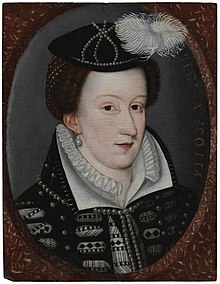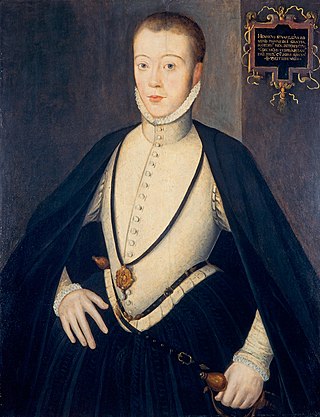
Henry Stuart, Lord Darnley, was an English nobleman who was the second husband of Mary, Queen of Scots, and the father of James VI of Scotland and I of England. Through his parents, he had claims to both the Scottish and English thrones, and from his marriage in 1565 he was king consort of Scotland. Less than a year after the birth of his son, Darnley was murdered at Kirk o' Field in 1567. Many contemporary narratives describing his life and death refer to him as simply Lord Darnley, his title as heir apparent to the Earldom of Lennox.

The Ridolfi plot was a Roman Catholic plot in 1571 to assassinate Queen Elizabeth I of England and replace her with Mary, Queen of Scots. The plot was hatched and planned by Roberto Ridolfi, an international banker who was able to travel between Brussels, Rome and Madrid to gather support without attracting too much suspicion.
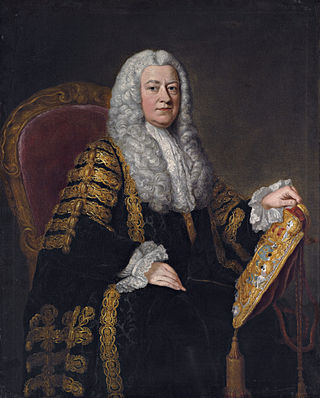
Philip Yorke, 1st Earl of Hardwicke, was an English lawyer and politician who served as Lord High Chancellor of Great Britain. He was a close confidant of the Duke of Newcastle, Prime Minister between 1754 and 1756 and 1757 until 1762.

William Lygon, 7th Earl Beauchamp,, styled Viscount Elmley until 1891, was a British Liberal politician. He was Governor of New South Wales between 1899 and 1901, a member of the Liberal administrations of Sir Henry Campbell-Bannerman and H. H. Asquith between 1905 and 1915, and leader of the Liberal Party in the House of Lords between 1924 and 1931. When political enemies threatened to make public his homosexuality he resigned from office to go into exile. Lord Beauchamp is often assumed to be the model for the character Lord Marchmain in Evelyn Waugh's novel Brideshead Revisited.

Michel de Castelnau, Sieur de la Mauvissière was a French soldier and diplomat, ambassador to Queen Elizabeth. He wrote a memoir covering the period between 1559 and 1570.
The Rising of the North of 1569, also called the Revolt of the Northern Earls or Northern Rebellion, was an unsuccessful attempt by Catholic nobles from Northern England to depose Queen Elizabeth I of England and replace her with Mary, Queen of Scots.

Sir Thomas Bromley was a 16th-century lawyer, judge and politician who established himself in the mid-Tudor period and rose to prominence during the reign of Elizabeth I. He was successively Solicitor General and Lord Chancellor of England. He presided over the trial of Mary, Queen of Scots and died three months after her execution.

Frederick Lygon, 6th Earl Beauchamp PC DL, styled The Honourable Frederick Lygon between 1853 and 1866, was a British Conservative politician.

Madresfield Court is a country house in Malvern, Worcestershire, England. The home of the Lygon family for nearly six centuries, it has never been sold and has passed only by inheritance since the 12th century; a line of unbroken family ownership reputedly exceeded in length in England only by homes owned by the British Royal Family. The present building is largely a Victorian reconstruction, although the origins of the present house are from the 16th century, and the site has been occupied since Anglo-Saxon times. The novelist Evelyn Waugh was a frequent visitor to the house and based the family of Marchmain, who are central to his novel Brideshead Revisited, on the Lygons. Surrounded by a moat, the Court is a Grade I listed building.
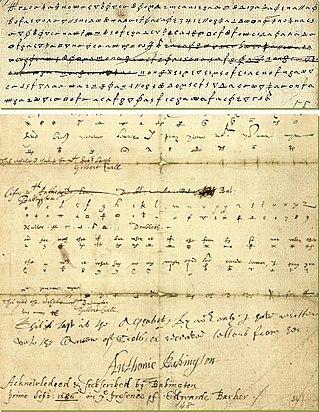
Charles Paget was a Roman Catholic conspirator, involved in the Babington Plot to assassinate Queen Elizabeth I of England.
Thomas Morgan of Llantarnam (1546–1606), of the Welsh Morgan of Monmouthshire, was a confidant and spy for Mary, Queen of Scots, and was involved in the Babington plot to kill Queen Elizabeth I of England. In his youth, Thomas, a staunch Catholic, worked as Secretary of the Archbishop of York until 1568, and then for Lord Shrewsbury who had Mary under his care at this time. Morgan's Catholic leanings soon brought him into the confidence of the Scottish queen and Mary enlisted Morgan as her secretary and go-between for the period extending between 1569 -1572 which coincided with a series of important conspiracies against Elizabeth. Morgan was imprisoned for 3 years in the Tower of London before exiling himself to France.

The Auld Alliance was an alliance between the kingdoms of Scotland and France against England made in 1295. The Scots word auld, meaning old, has become a partly affectionate term for the long-lasting association between the two countries. Although the alliance was never formally revoked, it is considered by some to have ended with the signing of the Treaty of Edinburgh in 1560.
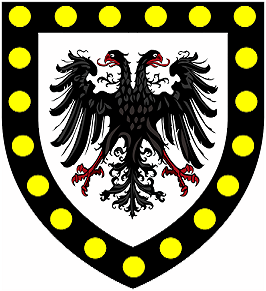
Sir Henry Killigrew was a Cornish diplomat and an ambassador for the Kingdom of England in the sixteenth century. He was several times employed by Elizabeth I in Scottish affairs and served as one of the English appointees to the Council of State of the Netherlands in the United Provinces in 1586 and 1587–1589. He served as a Member of Parliament for Newport & Launceston in 1553, for Saltash in 1563, and for Truro in 1571–2.
Anne Percy, Countess of Northumberland was an English noblewoman and one of the instigators of the Northern Rebellion against Queen Elizabeth I of England. To avoid punishment for her prominent role in the failed insurrection, Anne, along with her infant daughter, was forced into exile in Flanders, where she spent the rest of her life involving herself in Catholic plots and maintaining contact with the other English Catholic exiles. In Liège while living on a pension from King Philip II of Spain, she wrote Discours des troubles du Comte du Northumberland. Her husband Thomas Percy, 7th Earl of Northumberland, who had led the rebellion, was executed for treason. Three of her daughters were left behind in England and raised by their paternal uncle, Henry Percy, 8th Earl of Northumberland.
Thomas Paget, 3rd Baron Paget was an English peer, the second son of William Paget, 1st Baron Paget. He succeeded to the barony in 1568 at the death of his elder brother, Henry Paget, 2nd Baron Paget.
Claude Nau or Claude Nau de la Boisseliere was a confidential secretary of Mary, Queen of Scots, in England from 1575 to 1586. He was involved in coding Mary's letters with cipher keys.
William Crichton or Creighton was a Scottish Jesuit who became head of the Scots seminary in Flanders.

The Cunninghams of Drumquhassle were a family of the landed gentry in Scotland from the early 16th century to the mid-17th. They are linked to the Cunninghams of Kilmaurs in Ayrshire, being descended through junior lines via the Cunninghams of Polmaise. At their greatest extent, their lands included Mugdock-Mitchell and the house at Killermont, covering the part of parishes of Strathblane and New Kilpatrick. John Cunningham, the third laird held several positions of responsibility within the Scottish court, including Master of the Royal Household for James VI and a Collector General of tax during the regency of the Earl of Lennox, but his involvement in the power struggles between the Scottish nobility and the court of Elizabeth I of England also led to his demise and he was executed for treason in 1585. Over the next century, the family lost its land and power – in the mid-17th century, the Cunninghams sold their country house in Drumquhassle in rural Stirlingshire and it passed to the Govane family.
Sir Anthony or Antony Standen English spy or intelligencer.
The baptism of James VI was celebrated at Stirling Castle in December 1566 with a masque, fireworks, and a staged assault on a mock fortress. The entertainment was devised by George Buchanan and Bastian Pagez.
